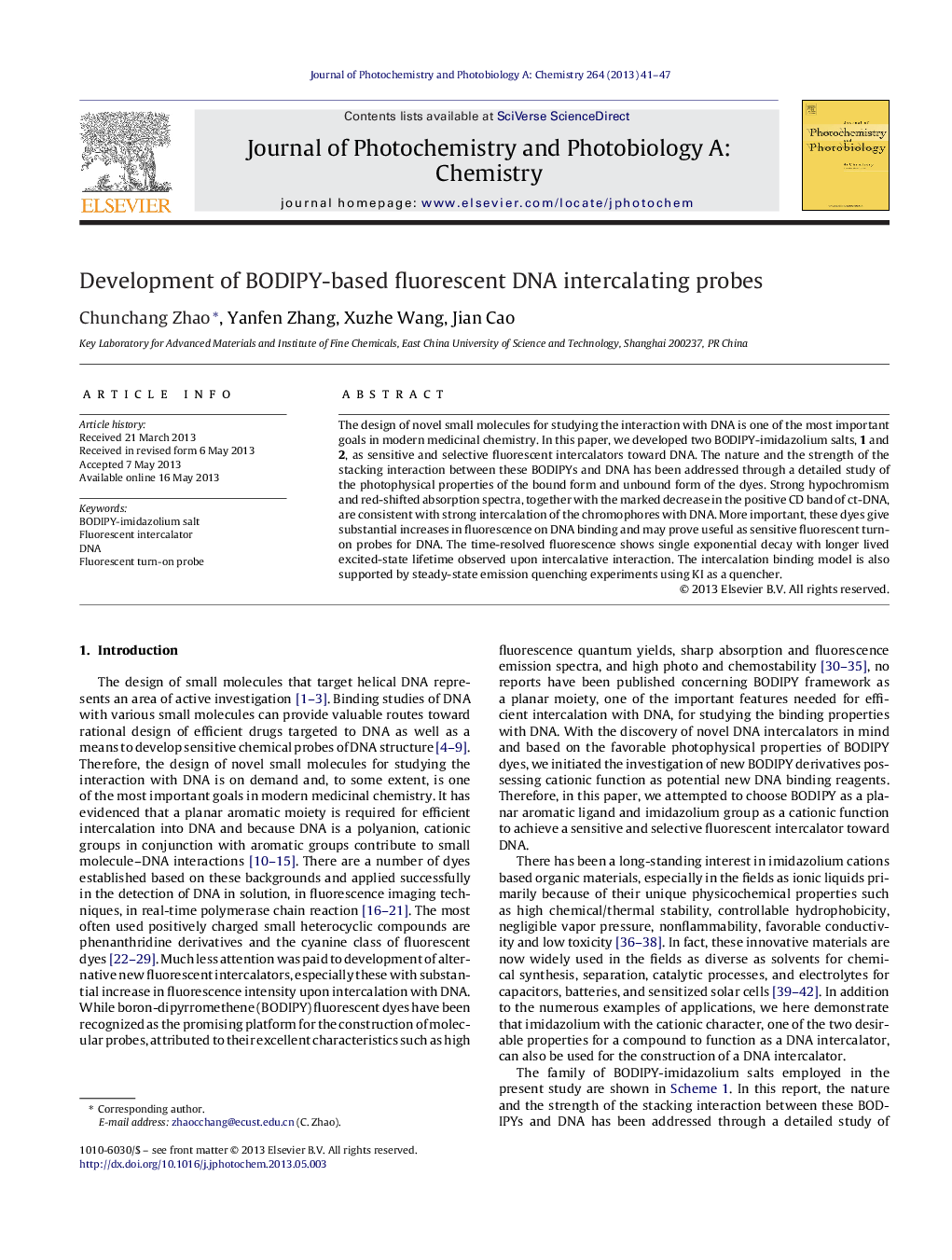| Article ID | Journal | Published Year | Pages | File Type |
|---|---|---|---|---|
| 27506 | Journal of Photochemistry and Photobiology A: Chemistry | 2013 | 7 Pages |
•Two BODIPY-imidazolium salts were developed.•The two dyes show sensitive detection of DNA in aqueous solution.•The intercalative interaction is responsible for the quite remarkable spectroscopic changes of 1 or 2 in the presence of DNA.
The design of novel small molecules for studying the interaction with DNA is one of the most important goals in modern medicinal chemistry. In this paper, we developed two BODIPY-imidazolium salts, 1 and 2, as sensitive and selective fluorescent intercalators toward DNA. The nature and the strength of the stacking interaction between these BODIPYs and DNA has been addressed through a detailed study of the photophysical properties of the bound form and unbound form of the dyes. Strong hypochromism and red-shifted absorption spectra, together with the marked decrease in the positive CD band of ct-DNA, are consistent with strong intercalation of the chromophores with DNA. More important, these dyes give substantial increases in fluorescence on DNA binding and may prove useful as sensitive fluorescent turn-on probes for DNA. The time-resolved fluorescence shows single exponential decay with longer lived excited-state lifetime observed upon intercalative interaction. The intercalation binding model is also supported by steady-state emission quenching experiments using KI as a quencher.
Graphical abstractTwo BODIPY-imidazolium salts were developed, showing sensitive detection of DNA in aqueous solution. It is the intercalative interaction of the BODIPY dyes with DNA that is responsible for the quite remarkable spectroscopic changes of 1 or 2 in the presence of DNA.Figure optionsDownload full-size imageDownload as PowerPoint slide
